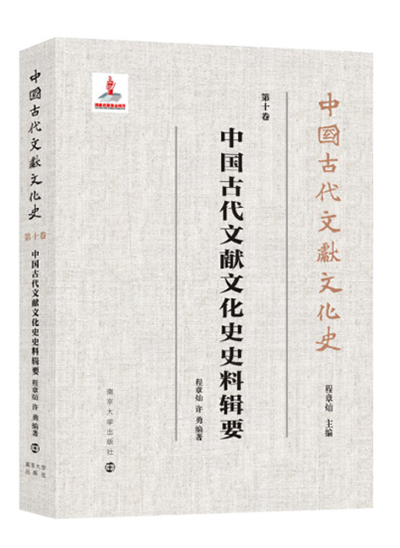Basic support of cultural history of documents

The Compilation of Historical Materials on the Cultural History of Ancient Chinese Documents
Basic historical materials determine the breadth and depth of academic systems, while the latter endows the former with new connotations, perspectives, and landscapes. The system of “the culture history of documents,” which attempts to reshape traditional philological studies, is also inseparable from the support of basic historical materials. The discipline aims to construct the traditional framework of the cultural history of ancient Chinese documents.
The Compilation of Historical Materials on the Cultural History of Ancient Chinese Documents, by Cheng Zhangcan, a professor from the School of Liberal Arts at Nanjing University, among others, carefully selects each piece of historical literature for its uniqueness.
For instance, regarding the generation of literature, the section on woodblock printing compiles the historical materials of Song Dynasty (960–1279) poet Ye Mengde’s Shilin Yanyu [Supper Discussions of the Stone Forest], which elaborates upon Song Dynasty woodblock printed works. People used to regard the invention of woodblock printing as an act conducive to literature inheritance and cultural transmission, but Ye pointed out the cultural defects brought by the technique. For example, scholars no longer showed strong interest in reading due to the ease of obtaining books, an opinion echoed by Song philosopher Zhu Xi. Moreover, the prevailing woodblock printed editions caused the gradual extinction of ancient transcripts, leaving no way to correct the mistakes therein.
Historical materials can be classified into five categories, namely, the generation, carrier, scattering, compilation, and collection of literature, conforming to the academic and historical logic of documentary development processes. The starting point of documentary history is “generation,” which represents a current buzz word and academic frontier. The section on documentary generation details writing, transcribing, rubbings, woodblock printing, and movable-type printing, corresponding to the transcription and printing eras of book history. Meanwhile, the slightly controversial rubbing, whether it falls into the transcription or rubbing eras, remains under discussion.
The term “documentary carrier” refers to the medium on which literature is circulated after its generation. The book lists the categories including oracle bones, bamboo slips and silk, bronze and stone tablets, and paper, while highlighting the role of bronze and stone tablets. Going forward, the generation and circulation of literature inevitably gave rise to scattering. Avoiding this entails various forms of document compilation, and as such the book enumerates collections, collation, the compilation of scattered and lost documents, the discrimination of falseness, and textual research. The compilation of documents is different from that of classics in that it encompasses both original and regenerated materials, resulting in a broader scope. For example, the differentiation of falsehood and textual research are considered regenerative results.
Liu Ming is an associate research fellow from the Institute of Literature at the Chinese Academy of Social Sciences.
Edited by YANG LANLAN
